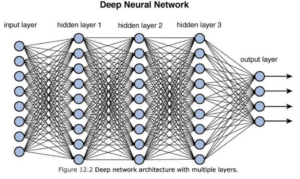By Meenakshi Nair
Meenakshi is a Technovation alumna and Student Ambassador and a high school junior from the San Francisco Bay Area. Over the past three years, Meenakshi has supported over 100 girls to create technology solutions to real community problems through the Technovation Girls program.
She is the founder of risetoai.org, through which she conducts events and coding workshops for teens interested in STEM, AI, and programming. She recently published free Udemy courses for Mobile App Development on Thunkable and Fundamentals of Machine Learning through Python. She loves all things about entrepreneurship and computer science, and she aspires to be a tech entrepreneur, connecting AI and communities. Visit her website risetoai.org/technovation-for-girls to learn more.
“Wow…” you remark as you marvel at the hues of the orange and pink in the horizon, casting a golden glow onto the calm waters of a vast ocean. Although it is just a realistic-looking image you have come across on the Internet, the glimpse of paradise appears so alluring that you can almost feel the gentle breeze of the wind and the scent of tropical fruits. But concealed within this image is a remarkable secret: it was created entirely using generative artificial intelligence. Generative AI is able to concoct stunning landscapes, bridging the gap between imagination and reality.
Not only can generative AI create images of breathtaking landscapes, but its application extends to every corner of our lives including healthcare, finance, education, and more. From enhancing medical imaging to generate higher resolution images to aid in medical diagnostics, analyzing vast drug datasets for potential drug candidates, and analyzing financial markets with market trends, generative AI is rewriting the rules of what is possible.
Generative AI is a blooming field especially recently in light of language processing models such as OpenAI’s GPT-3 and Google’s Bard. Generative AI refers to systems designed to generate content such as text, audio, and images based on patterns from large datasets. Generative AI requires large amounts of good quality, diverse data for training. For example, GPT-3 was run on 45 terabytes of text from the Internet.
To put this into perspective, this is roughly equivalent to the information in over 100 billion pages of standard printed text, which is more than 10 times the number of pages in the Library of Congress, the largest library in the world. Generative AI systems typically employ neural networks, which are computational models mimicking the human brain. Such neural networks consist of interconnected nodes, basic processing units that perform computations on inputs, that process and transform data to learn patterns that eventually help create realistic new examples modeled off the original data. The neural network employed depends on the dataset’s characteristics/nature and specific task at hand. Recurrent neural networks, or RNNs, work well with sequential data, making them particularly suitable for text generation and forecasting. They are able to maintain information about previous inputs, essential for creating coherent sequences.

The image depicts the deep network architecture with multiple layers: input layer, hidden layers, and an output layer. Image published in Towards Data Science.
Let’s explore some noteworthy applications that showcase the versatility and impact of generative AI.
- Text Generation: Generative pre-trained transformer (GPT) models, exemplified by GPT-3, have emerged as frontrunners in text generation. These models exhibit the capability to produce coherent and contextually relevant paragraphs or entire articles based on a given prompt. The underlying architecture of these models allows them to understand and generate human-like text with remarkable fluency.
- Image Generation: In the realm of visual arts, generative AI has made strides with examples such as DeepDream. Developed by Google, DeepDream employs convolutional neural networks to find and enhance patterns in images, resulting in visually intriguing and sometimes surreal creations. StyleGAN, another notable model, specializes in generating realistic and high-quality images, including faces that do not exist, artwork, and even synthetic animals.
- Drug Discovery: In the pharmaceutical industry, generative models play a pivotal role in molecule generation for drug discovery. These models generate novel molecular structures, potentially accelerating the identification of new therapeutic compounds and expediting the drug development process.
- Healthcare: Medical image synthesis is another area where generative AI makes significant contributions. By generating synthetic medical images, these models assist in training machine learning algorithms when real data is limited or challenging to obtain, contributing to advancements in diagnostic and predictive healthcare technologies.
The applications of generative AI are endless and capable of changing the world. It can be used to create personalized learning materials and tutoring systems, which in turn bridges educational gaps. It can be used to create individualized treatment plans tailored specifically for a patient’s medical history and symptoms. It can be used for consumer-based applications in retail, banking, travel, and more. From revolutionizing industries to enhancing creative endeavors in art and entertainment, generative artificial intelligence has the potential to undoubtedly make a lasting impact on our society.
Generative AI, although showing remarkable capabilities, raises concerns like academic integrity, intellectual property issues, accuracy in journalism, biases in datasets, privacy risks, and challenges in transparency. Efforts to mitigate these concerns include implementing rigorous oversight in academic settings, establishing clear legal frameworks for intellectual property rights, enforcing stringent fact-checking in journalism, addressing biases in training datasets, prioritizing privacy safeguards, and developing more transparent and explainable AI models.
Collaborative initiatives by researchers, policymakers, and industry leaders are actively shaping responsible practices to harness the benefits of generative AI while navigating its potential risks and societal impact.
Help make technology education accessible to more girls around the world. Learn how you can support Technovation or get involved.

